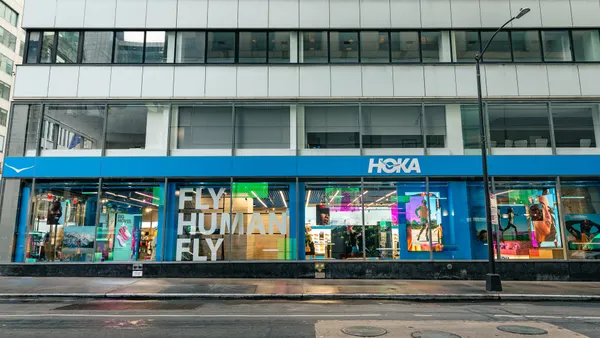Dive Brief:
-
Neiman Marcus Group on Tuesday named Adam Orvos as Chief Financial Officer, effective April 25. He takes over from interim CFO Dale Stapleton, who had temporarily stepped into the role last year and will return to his duties as chief accounting officer, according to a company press release.
-
Orvos will lead the finance, accounting, properties, capital planning, and spend management functions for the company's banners — Neiman Marcus, Bergdorf Goodman, mytheresa, Neiman Marcus Last Call, and Horchow. He will report directly to CEO Geoffroy van Raemdonck, who himself just recently arrived.
-
Orvos has significant experience in retail and at department stores in particular, starting out at the May Department Stores Company and working his way to CFO of its Foley's division in 2004. Later he was at Belk, working in finance and human resources, taking on the CFO role there after four years. Most recently he was CEO at independent beverage superstore Total Wine & More.
Dive Insight:
The CFO spot at Neiman Marcus Group has had a swiftly revolving door of late — Stapleton took on the job last year upon the departure of then-interim chief financial officer and chief operating officer Michael Fung, who left after a mere seven months. And Fung had taken over from Donald Grimes, who himself had been in the role for just 17 months.
In the meantime, the company's finances have been a festering problem. While the company last month reported a 6.2% second quarter total revenue rise to $1.48 billion and a same-store sales rise of 6.7%, (which executives attributed to its new 'Digital First' strategy and investments in new technologies and marketing tools), the company is still "sitting on a debt bomb that it will somehow have to find a way to defuse," Mark Cohen, director of retail studies at Columbia University's Graduate School of Business, warned on Tuesday. "Though the company's recent performance appears to have improved, it remains to be seen whether or not that will continue to be the case."
The upscale department store retailer's debt-to-equity ratio more than doubled between October 2016 and October 2017, as did its liabilities-to-equities ratio, according to a recent report from CreditRiskMonitor, which tracks the financial risks associated with companies with publicly traded stock or bonds.
Neiman's total debt stood at $4.8 billion at the end of October 2017, according to CreditRiskMonitor, which also noted successive quarterly losses, adding up to $617.9 million, since first quarter 2017 (which ended Oct. 29 of 2016). As a result, Neiman bankruptcy risk in the next year is as high as 50%, according to that report. Also in October, Fitch Ratings included Neiman Marcus on a secondary "loans of concern" list, indicating some default risk over a total outstanding loan balance of $2.8 billion.
"The company's performance will have to improve markedly and consistently for it to be able to reorganize that debt, or it will have to find an investment or merger partner to enable it to do so," Cohen told Retail Dive in an email.
Neiman Marcus has taken painful steps to return to profitability and boost sales, however. The department store cut 225 jobs in July and scaled back its off-price footprint by about 25% to focus on luxury. The company talked with Hudson's Bay about a potential buyout, but walked away. In recent years, Neiman had also floated a possible IPO, but reversed course.














